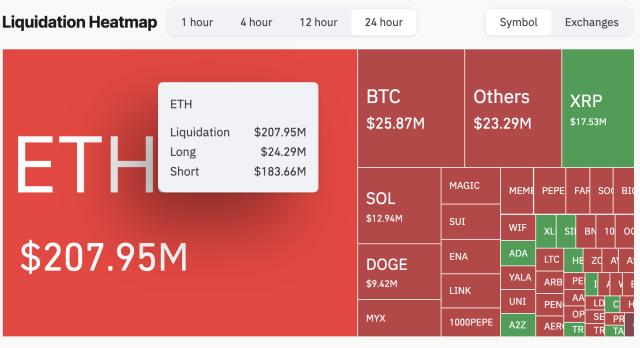SEC and CFTC Receive Sword of Authority, Opening "Safe Harbor" for Crypto Projects.
Author: Ethan
Original: Odaily Planet Daily
On Eastern Time July 30, the White House's "Digital Assets Policy Report" was officially released. This article will briefly review the five key conclusions and two uncertainties, and provide insights into the regulatory and business implementation impacts and next observation points. (The report referenced in this article is the official version)
Five Key Conclusions
1) Stablecoins "Entering Payment Channels", with Clear Definition and Regulatory Boundaries:
The report provides a legal definition of "payment stablecoins": used for payment/clearing, redeemable at a fixed amount, and "not national legal tender, not deposits, and not securities"; simultaneously defining (permitted) stablecoin issuers as "financial institutions" under the Bank Secrecy Act (BSA), and requiring overseas issuers to legally execute freezing/seizure orders in US law enforcement scenarios. This means stablecoins are incorporated into the payment and anti-money laundering/counter-terrorism financing framework, rather than the securities issuance channel.
For issuers, as long as they improve reserve quality and transparency in line with the BSA system, establish redemption commitments, and pre-set response processes for US freezing and seizure orders, payment and settlement products will have an operable compliance pathway. Meanwhile, the uncertainty on the banking side has significantly decreased: pre-emptive reporting and "reputation risk" barriers have been removed, with main account applications required to have clear time limits and deemed approved if exceeded, thereby providing restart and expansion space for custody, collection and payment, and on-chain payment businesses. In the capital market, time-limited safe harbor/sandbox and trading platform adaptation mechanisms provide an institutional channel of "trial operation - disclosure - graduation" for projects with gradual functional delivery or progressive decentralization, reducing the structural risk of "violating regulations before launching".
In terms of specific entities, stablecoin issuers need to supplement reserve disclosure, monthly reports, and redemption commitments along the payment tool route, and embed cross-border law enforcement coordination into internal control processes. Banks and custody institutions should simultaneously assess the feasibility of restoring custody business and expanding on-chain payments, advance main account applications, improve risk control standards, and pay attention to updates in third-party/sub-custody and technical best practices. Trading platforms and developers can prepare disclosure materials for token economics, governance permissions, upgrade and emergency mechanisms in advance around the thresholds, timelines, and "graduation path" of the safe harbor/sandbox to match compliance requirements. Tax and finance teams need to pre-research the applicable boundaries of wash sale and constructive sale rules, improve the tax treatment of crypto lending and stablecoins, and transform the 1099 reporting and cost basis system according to the schedule to ensure smooth tax reporting and audit links.
Next Steps to Observe
What follows is the landing rhythm from principles to operations, focusing on four key lines:
First, banking interface. The Federal Reserve, OCC, and FDIC need to write the time limits and deemed approval upon expiration of "main account" approval into executable processes, while clearly stating that they cannot outright reject applications "due to digital asset business"; and disclose statistics such as acceptance volume and average processing time. Simultaneously, the wording about reputation risk in inspection manuals should be completely removed to avoid de facto discouragement.
Second, market structure pilot. SEC/CFTC is expected to launch a consultation or small-scale pilot for safe harbor/sandbox, and refine operational norms and disclosure requirements for ATS/brokers/custody/transfer agents for trading non-security digital assets alongside traditional securities, providing a clear "admission - trial operation - graduation" path.
Third, "operationalization" of national digital asset reserves. The Treasury Department needs to introduce a comprehensive process for source reception, custody architecture, accounting, and governance, and decide whether to establish regular disclosure standards and rhythm. This will directly affect market expectations about the "national balance sheet" and policy certainty.
Fourth, congressional coordination. At the legislative level, subsequent consultation and implementation will be promoted for stablecoins (implementation support for GENIUS), CLARITY (market structure), and anti-CBDC paths; the report's attitude is clear - no CBDC promotion.
Which line is implemented first will determine the sequence of fund "checkpoint" removal; if main accounts and market structure tools are clarified first, fiat currency deposits/withdrawals and compliant liquidity will benefit the most.
Conclusion
This 166-page report pushes US digital asset policy from the "fuzzy zone" into the "operable area". Its main thread is clear: using payment stablecoins and BSA as a framework, restoring bank-side access capabilities, perfecting market structure through SEC/CFTC rule tools, complementing institutional gaps with progressive taxation, and clearly not promoting CBDC.
Meanwhile, what remains undecided is not the attitude, but the implementation: specific rules for main accounts and safe harbor/sandbox, technical standards for cross-border equivalence, and whether a disclosure mechanism for "national digital asset reserves" will be established. In the coming months, the landing speed of these details will determine the pace of the US compliant market and the spillover effect of US dollar stablecoins.
Overall, the route is clear, red lines are defined, and the market is waiting for a "verifiable timeline".
Disclaimer: As a blockchain information platform, the articles published on this site represent only the views of the authors and guests, and are not related to Web3Caff's stance. The information in the article is for reference only and does not constitute any investment advice or offer. Please comply with the relevant laws and regulations of your country or region.








